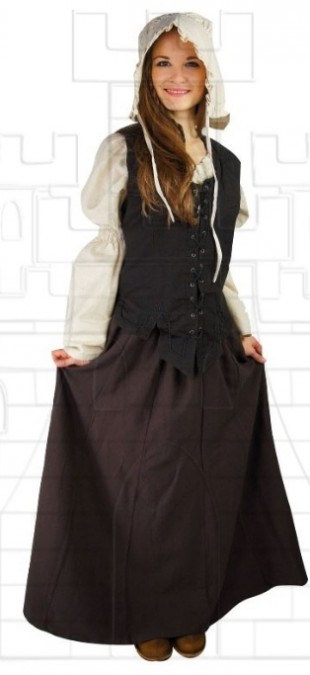What is a Saya in a garment?
The saya is a fascinating garment that dates back to the Middle Ages, designed to cover the body from the neck to the feet. Considered the predecessor of the modern skirt, the saya has played a fundamental role in the fashion of past eras, especially in women's attire. This clothing was made in a wide variety of fabrics, ranging from linen and cotton, ideal for everyday use, to luxurious materials like silk and velvet, which were reserved for special occasions and those of higher social status.
The saya was not worn alone, but was part of a more elaborate outfit. It was common to combine it with a belt to define the waist, a coif or hood to cover the head, and a cloak that provided warmth and elegance. These accessories not only served a practical purpose but were also a form of personal expression and a way to manifest the wealth and social status of the wearer. In fact, sayas could be adorned with intricate embroidery, fine lace, and jewels, becoming a symbol of distinction.
It is interesting to note that in some contexts, the saya was also used as a male garment. In such cases, the saya could be shorter and made of more durable materials, thus adapting to the work and daily activities of men of the time. This illustrates the adaptability of the garment and its place in the daily wear of different classes and genders.
Therefore, the saya is not simply a garment, but encapsulates a significant part of the history of medieval fashion, reflecting various social and cultural functions. Its design and construction varied by region and time, making it a fascinating element that continues to intrigue lovers of history and fashion.

















